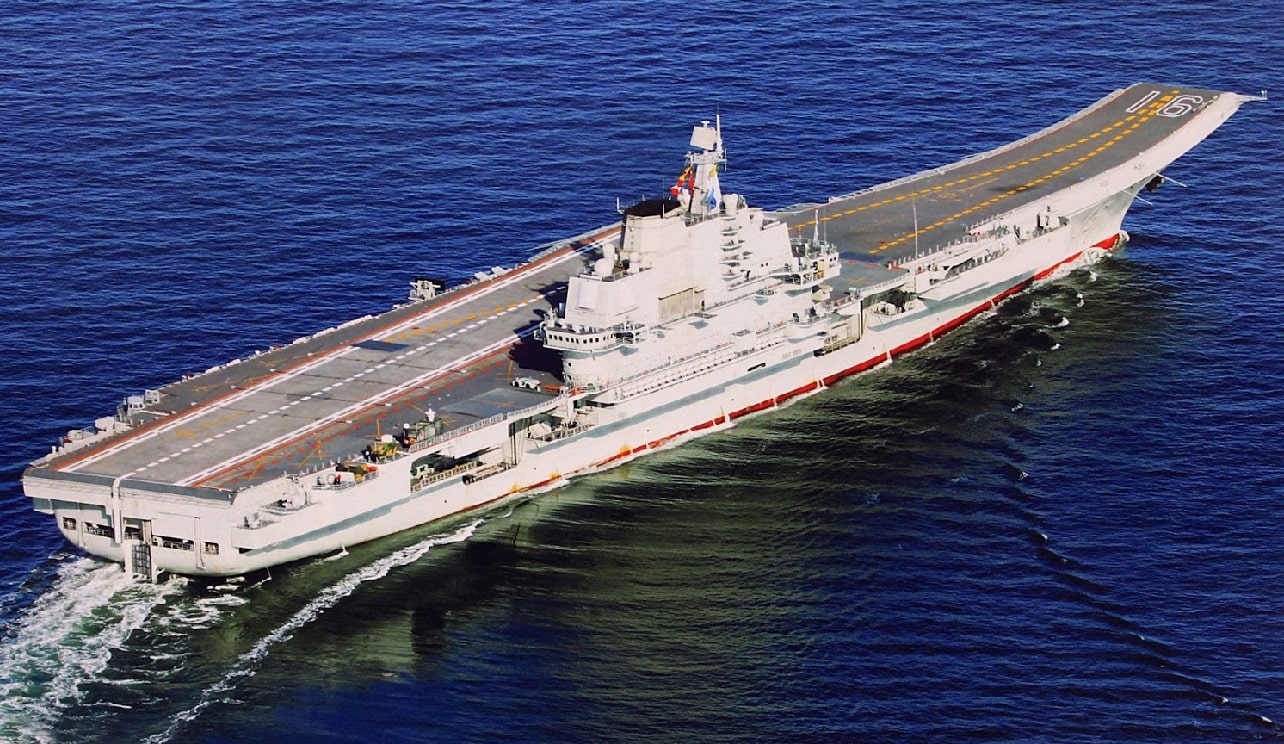Meet the Fujian – The People’s Liberation Army Navy (PLAN) is currently the largest naval force in the world, and after the United States will soon have the largest aircraft carrier force as well. On Friday, it launched its third and most advanced aircraft carrier at the Jiangnan Shipyard in Shanghai. Named Fujian (Type 003), the 80,000-ton vessel is also China’s first domestically designed and built catapult-equipped carrier.
The Type 003 carrier left its drydock following a launch ceremony and is now tied up at a nearby pier. The launch has been seen as a major milestone for the PLAN, which will allow it to extend its range and capabilities. The Fujian is believed to rival many western carriers, especially as it utilizes an electromagnetic catapult system instead of a “ski jump” style flight deck to launch aircraft.
That will allow Beijing to employ more sophisticated jets from a carrier.
“This is an important milestone for China’s military-industrial complex,” Ridzwan Rahmat, a Singapore-based analyst with the defense intelligence company Janes, told NPR via The Associated Press.
“This shows that Chinese engineers are now able to indigenously manufacture the full suite of surface combatants associated with modern naval warfare, including corvettes, frigates, destroyers, amphibious assault ships, and now an aircraft carrier,” Rahmat added. “This ability to construct a very complex warship from the ground up will inevitably result in various spin-offs and benefits for Chinese shipbuilding industry.”
Fujian – What’s in a Name?
The naming of the Type 003 could be especially notable and even a portent of its future role in the PLAN. As CNN reported on Friday, China has named its past aircraft carriers after its coastal provinces, with Liaoning in the northeast and Shandong in the east. Fujian, in the southeast, is also the closest province to Taiwan, separated by a strait that is fewer than 80 miles (128 kilometers) wide at its narrowest point.
The Chinese Communist Party (CCP) continues to maintain sovereignty over the self-ruling island of Taiwan – despite the fact that the People’s Republic of China never actually ruled the island. Yet, Beijing considers the island to be a breakaway province that will be returned to mainland control, and by force if necessary.
Aircraft carriers would be crucial to such forceful efforts. The fact that the Type 003 is named Fujian clearly indicates Chinese leader Xi Jinping’s desire to accomplish reunification.
“The Fujian is a testament of Beijing’s continued advancements in defense capabilities and indicates its intention to contest the status quo in terms of maritime dominance worldwide,” said Sourabh Banik, defense analyst at international analytics firm GlobalData, via an email. “The Fujian is set to be China’s third and most technologically superior aircraft carrier to date, after Liaoning (imported from Russia) and Shandong (indigenously built), which the People’s Liberation Army Navy (PLAN) will be using to project its power globally.”
The ship will still require years of additional construction to be completed, followed by extensive sea trials – yet its launch sends the message, “China is coming” not only to Taiwan but to other regional powers as well as the United States.
“Apart from asserting its dominance among its competitors in the Asia-Pacific region, Beijing will also look to counter the U.S. Navy’s influence in the region,” added Banik. “This is evident from its growing expenditure in development and procurement of sophisticated naval platforms over the past few years; a trend which is anticipated to continue over the next 10 years as well.”
Fujian isn’t the end of Beijing’s naval efforts. Far from it, as China is already developing a fourth – and likely nuclear-powered – carrier, along with other warships.
“China is expected to cumulatively spend $36.6 billion on acquiring various categories of surface warships between 2022 and 2032, and the aircraft carrier segment will account for 34.4% of that spending, according to GlobalData’s report,” explained Banik. “After the commissioning of Fujian, Beijing is likely to embark on the construction of a fourth aircraft carrier within this decade, which will ensure a sustained investment in the segment beyond 2032 and will make the PLAN a formidable force to reckon with for decades to come.”
Now a Senior Editor for 1945, Peter Suciu is a Michigan-based writer who has contributed to more than four dozen magazines, newspapers and websites. He regularly writes about military hardware, firearms history, cybersecurity and international affairs. Peter is also a Contributing Writer for Forbes.

